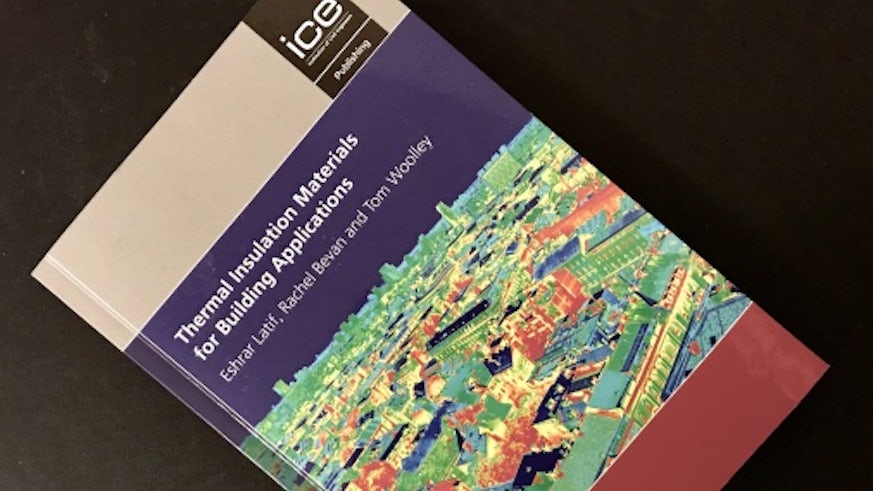Welsh School of Architecture Lecturer Dr Eshrar Latif publishes book to help architects select thermal insulation materials.
27 September 2019

The book entitled ‘Thermal Insulation Materials for Building Applications’ focuses on the thermal, environmental, fire and moisture performances of the major thermal insulation materials available in the UK, Europe and worldwide.
Dr Latif said:
“The building industry tends to comply with the heat loss parameters of a wall by using any insulation that fulfils the requirement, especially the cheaper ones. In doing so, they ignore the environmental impact of those insulation materials and place the health and wellbeing of the clients at risk. The Grenfell tower fire is a recent example of the consequences of choosing insulation materials that can emit hazardous chemicals while burning. By reading this book, building professionals will be able to differentiate between sustainable and non-sustainable, hazardous and non-hazardous insulation materials and make their own decisions on selecting insulation materials.”
Dr Latif is Course Leader on the MSc in Sustainable Mega Buildings, with the module: ‘Climate, Comfort and Energy’ directly linking into his research. There is a specific focus in this module on the science of minimising energy demand for maintaining thermal comfort in buildings by using passive solutions.
Dr Latif said:
“While writing this book we were surprised by the fact that some of the information regarding the health and safety of thermal insulation materials are either misrepresented or suppressed by the insulation industry. This book provides an opportunity for architects and building professionals to make an informed decision in terms of choosing thermal insulation materials for any building project.”
The MSc in Sustainable Mega Buildings focuses on principles of sustainable design and planning of mega-buildings and aims to train students to respond to the environmental challenges associated with these buildings.